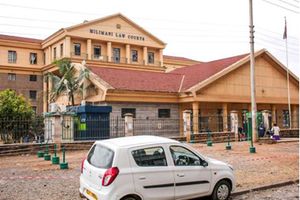Premium
More counties stand to lose in revenue-sharing plan, CRA says

Senators during debate on the Division of Revenue Bill.
What you need to know:
- In the last 11 weeks, the lawmakers have been struggling to no avail to pass the third criteria of sharing revenue among counties but the efforts have failed because of the majority view that no county should lose anything.
- The CRA has come up with three options, all of which indicate that 28 counties stand to lose out on the allocations while 19 will gain should its formula be applied to the 2019 population census.
The 12-member committee of the Senate, formed to unlock the stalemate on revenue-sharing, has been forced to extend engagements with stakeholders after new simulations by the Commission on Revenue Allocation (CRA) indicated that at least 28 counties will lose should its original formula be adopted.
The simulation threw the lawmakers off-guard as it entrenches the problem that is the cause of the fallout that has seen the House fail to adopt the formula.
In the last 11 weeks, the lawmakers have been struggling to no avail to pass the third criteria of sharing revenue among counties but the efforts have failed because of the majority view that no county should lose anything.
In the initial formula, 19 counties, drawn mainly from the North, Coast and Lower Eastern, stand to lose while 28 others stand to gain.
But in a twist, the CRA submitted three options to the committee, all of which when simulated against the Sh316.5 billion allocated to counties reversed the reality and showed that 28 counties will lose out while the 19 will gain.
The commission had used the 2009 census and poverty index to develop the contentious formula before the country went into last year’s census.
The formula, which puts more weight on population, was submitted to the Senate in April last year.
Shocking report
However, when they appeared before the committee on Friday and simulated their formula against the 2019 population census and poverty index, the results shocked and confused the senators, according to a source.
The CRA came up with three options, all of which indicated that 28 counties stand to lose out on the allocations while 19 will gain should its formula be applied to the 2019 population census.
These details emerged during the meeting between the committee, National Treasury CS Ukur Yatani and CRA on Friday.
A source told the Nation that Mr Yatani cast doubt on the proposal by Nominated Senator Petronila Were, saying it would take at least four years to implement if approved by the Senate.
Ms Were has proposed an amendment to the House committee on finance in which she suggests that allocation per county in the 2020/21 financial year be retained as it was in the last financial year.
She also wants the original formula developed by CRA adopted but only if the allocation to the counties is increased to Sh348 billion.
The CS told the committee it would take at least four financial years for the equitable shareable revenue to peak at Sh348 billion, and that is if the vagaries of the Covid-19 pandemic are not factored in.
Pandemic's effects
The projections provided to the committee show that the equitable shareable revenue will rise to Sh323 billion in the 2021/22 financial year, then to Sh331 in the 2022/23 and Sh341 billion in the 2023/24 financial year.
“These are projections we developed before the Covid-19 pandemic and with the pandemic, it could take longer for the equitable shareable revenue for counties to peak at Sh348 billion,” Mr Yatani told the meeting.
The committee was established by the House on Monday last week to try to build consensus to end the stalemate.
Co-chaired by Senator Moses Wetang’ula (Bungoma) and Johnson Sakaja (Nairobi), it is trying to come up with a middle ground against 11 amendments proposed by different senators.
The committee will continue with its sittings this morning with a focus on the submission by the National Treasury.
Most senators were not happy with the CRA submissions, as one said, “The submission is of no use. It will only aggravate an already bad situation.”
However, the source declared that there was one agreement in the committee - that in this financial year, every county should get an allocation similar to the last financial year.





